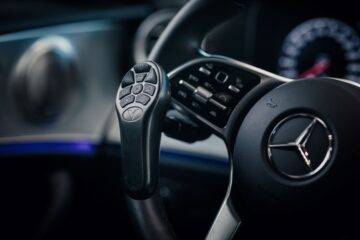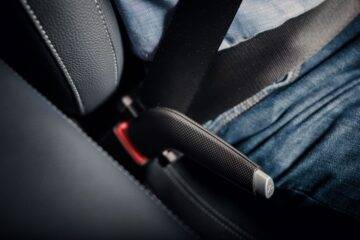Driving Aids for Arthritis: How They Work and Which Are Best for You
Arthritis is a common condition that causes pain and inflammation in a joint. It affects millions of people in the UK, but with the right techniques and driving aids, you can drive comfortably and safely with arthritis.
Understanding Arthritis and Its Impact on Driving
There are several different types of arthritis, but the most common types include Osteoarthritis and rheumatoid arthritis which typically cause the following symptoms:
- joint pain, tenderness and stiffness
- inflammation in and around the joints
- restricted movement of the joints
- warm red skin over the affected joint
- weakness and muscle wasting
Arthritis can impact your ability to drive in several ways. Pain, swelling and stiffness in your joints, particularly in your hands, wrists, knees or hips, can limit your mobility and strength. These symptoms can influence your capability to handle the vehicle, react promptly or firmly grip the steering wheel. Recognising and overcoming these issues is vital for safe and comfortable driving.
Popular Driving Aids for Arthritis Sufferers
The advancements in technology for mobility continues to make life easier for those living with arthritis, and this extends to driving aids. There are a range of specifically designed controls to make driving safer and more comfortable.

Remote control devices can be installed to allow you to operate your vehicle’s secondary functions such as the indicators, horn, headlights, wiper and washer, all from one device. This is ideal if reaching for these functions are usually uncomfortable or strenuous or the actual buttons/switches themselves are too difficult or painful to operate. Steering aids, such as a tetra grip, are also helpful if you struggle to grip a standard steering wheel. The tetra grip engages with your wrist for greater control of the wheel and enables you to continuously turn the wheel without removing your hand.
Or if it’s the foot pedals that you struggle to operate, you can benefit from hand controls which transfer the function of accelerating and braking by foot to hand.

A panoramic mirror simply fits over an existing rear-view mirror and reduces the need to turn to check blind spots when switching lanes and entering slip roads. Ideal if you have reduced range of motion especially in your neck, shoulders or back.

A seat belt extender is another popular adaptation for those with a reduced range of motion, shoulder pain, arthritis or limited dexterity as it offers an improved grip over the buckle and reduces the uncomfortable twisting often involved in fastening a seatbelt.
Further to this, the design of your vehicle can greatly affect the comfort of your journeys. Cars that have an automatic transmission, power steering and adjustable seats with good back support can help to ensure maximum comfort. Additionally, during colder months, heated seats can help alleviate joint pain.
How to Choose the Right Driving Aid for Your Arthritis
If you’ve never driven with driving aids before, we would always recommend a driving assessment with your local driving assessment centre. This will involve an assessment consultation, physical evaluation and driving evaluation with an experienced occupational therapist and approved driving instructor who will provide a report with recommendations on the appropriate driving aids to suit your needs.
Following this, as a specialist vehicle adaptations company, we will determine the exact style of driving aid based on usability, severity of arthritis and vehicle compatibility. For example, if you have been advised that you require hand controls to drive, our assessor will explain the different hand controls in our range which have different grip shapes, range of acceleration and secondary function switches to suit varying levels of dexterity and strength.
We can also take this opportunity to explore if there are any other additional vehicle adaptations to make your entire driving experience and car journeys much more comfortable. For example, if you find it uncomfortable, difficult or even painful to get in and out of the car, we can look into a transfer plate or swivel seat solution to ease that process.
Benefits of Driving Aids for Arthritis
Driving with arthritis can often be painful and difficult, even leading to the decision to give up driving because of that. But having arthritis shouldn’t mean losing the ability to drive, with the right adjustments and driving aids, you can increase your comfort, safety and independence on the road. Ensuring you can continue to enjoy the freedom and convenience that driving offers, enabling you to travel where you want, when you want and with the people you want.
Explore our guide to driving with arthritis for further information and advice.
Where to Find and Install Driving Aids for Arthritis
Most car adaptations require a specialist installation by a trained engineer due to the nature of accessing the vehicle’s electrical systems and the adaptations must be attached securely.
So it’s extremely important to speak with a professional vehicle adaptations company to advise you on vehicle compatibility and provide quality, reliable adaptations, securely fitted into your car.
At Mobility in Motion we offer a needs based assessment, select the right adaptations tailored to your individual needs and provide fuss-free installation and aftercare support. If you’d like to know more about our range of driving aids for arthritis and how they can help you, contact our team online or call us on 0800 288 4422.
Tips for Helping Elderly In and Out of Car – a useful guide for caregivers assisting those with limited mobility.